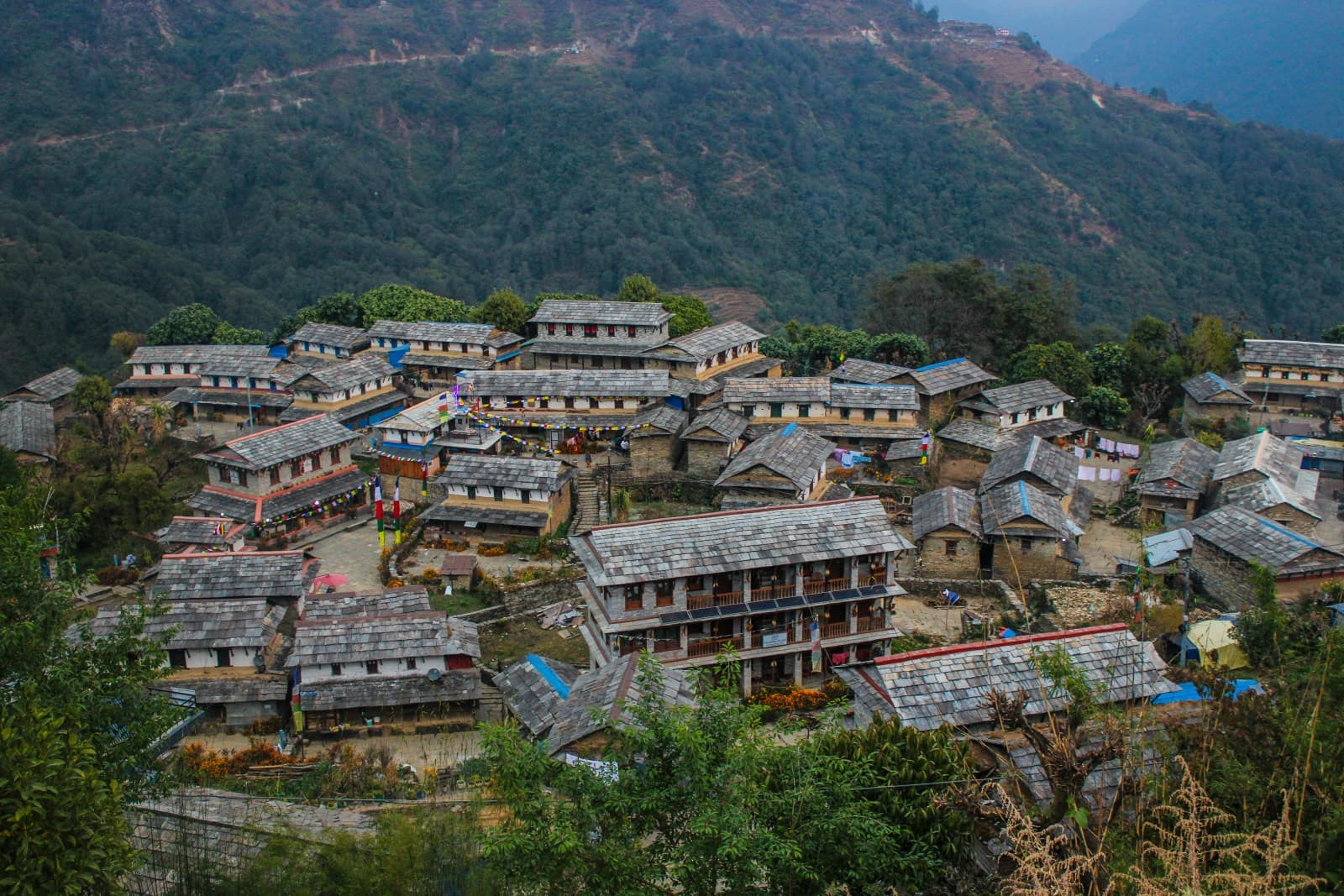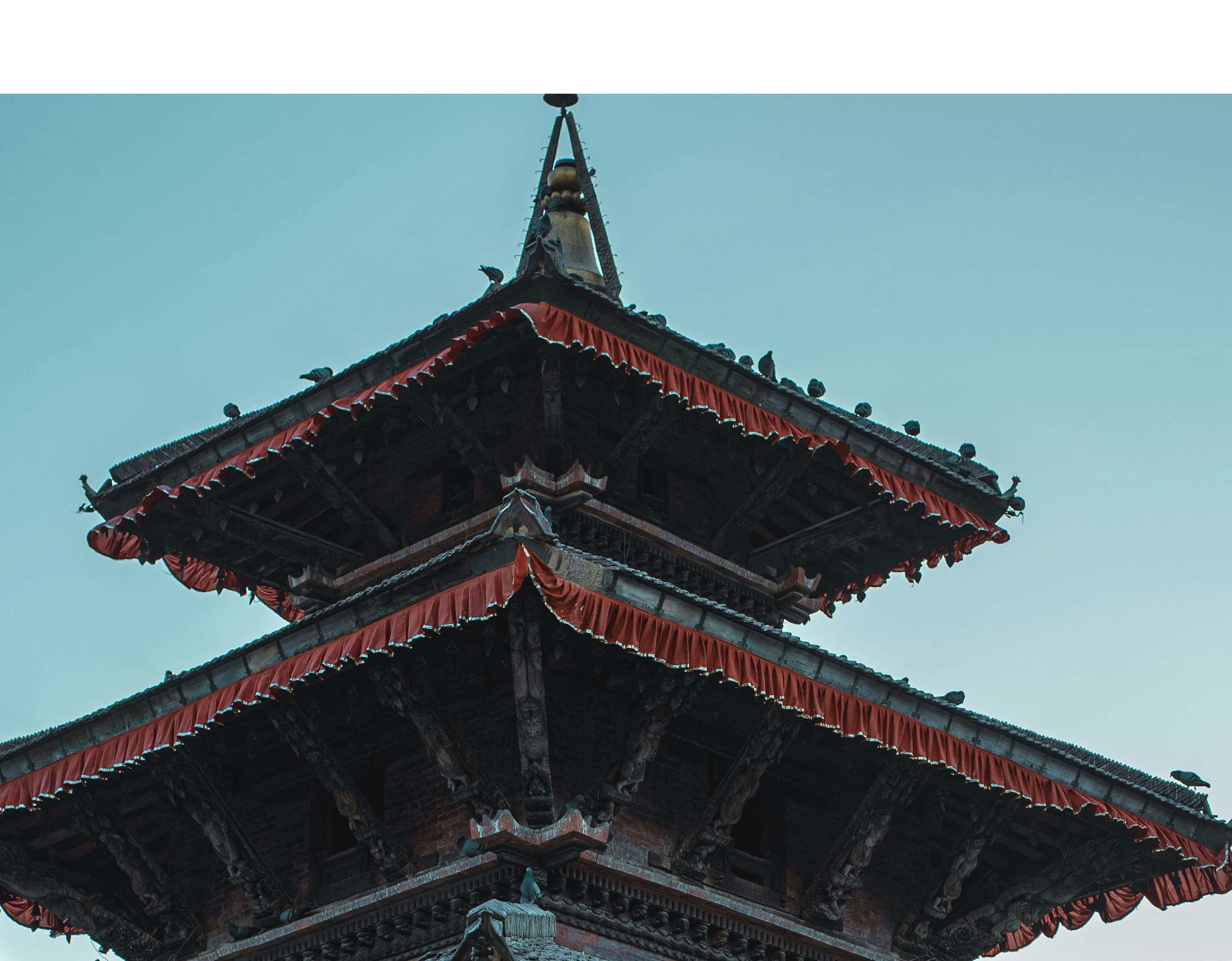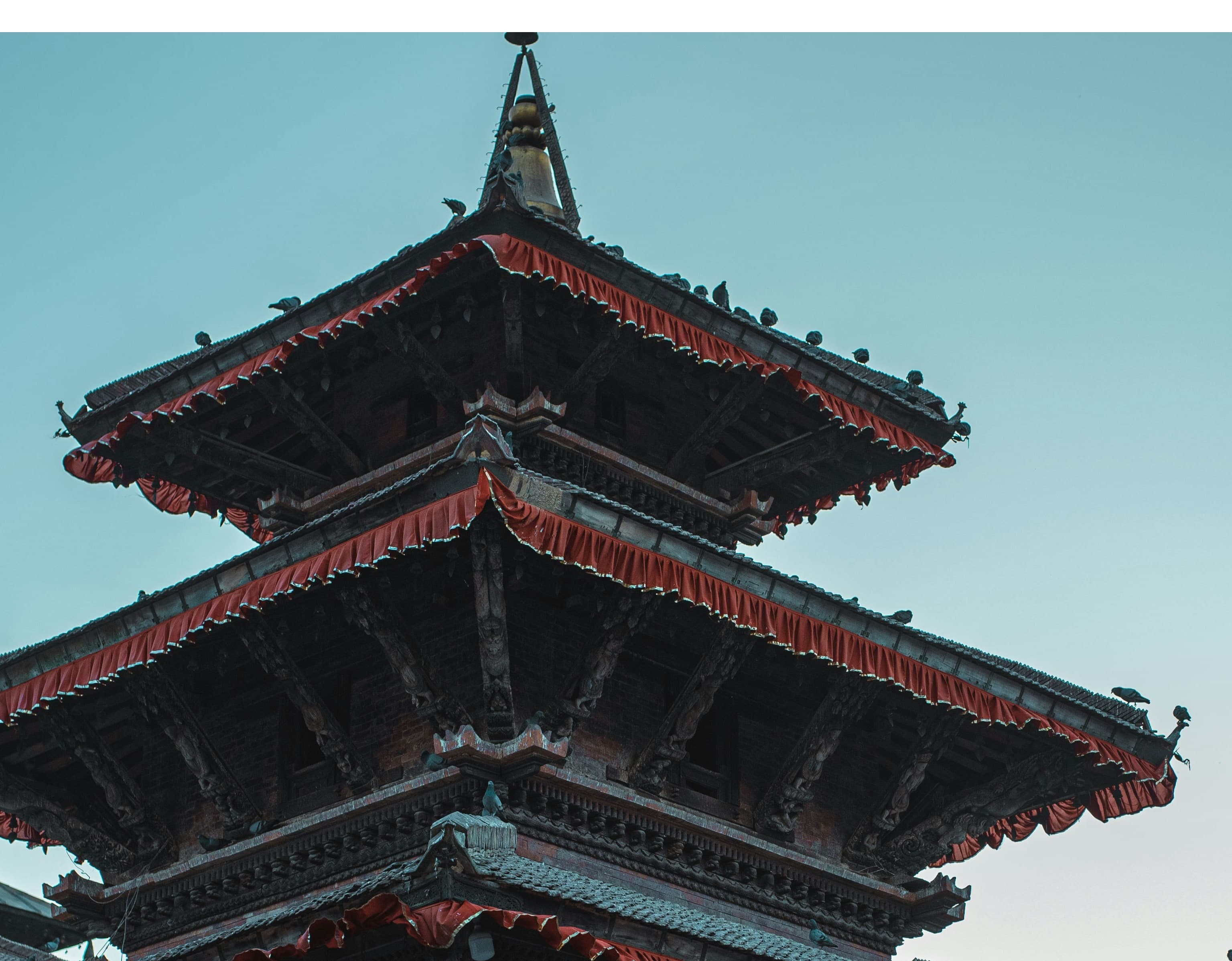Embarking on a journey through Nepal's Himalayan wonderland is an adventure of a lifetime, an opportunity to immerse oneself in the unparalleled beauty of nature, the richness of local culture, and the challenges of the trekking trails that meander through this majestic landscape. This guide aims to unveil the splendor of trekking in the Himalayas, highlighting the best routes, seasons, cultural experiences, and practical advice for adventurers seeking to explore Nepal's awe-inspiring heights.
The Best Routes for Trekking in Nepal
Everest Base Camp Trek Route
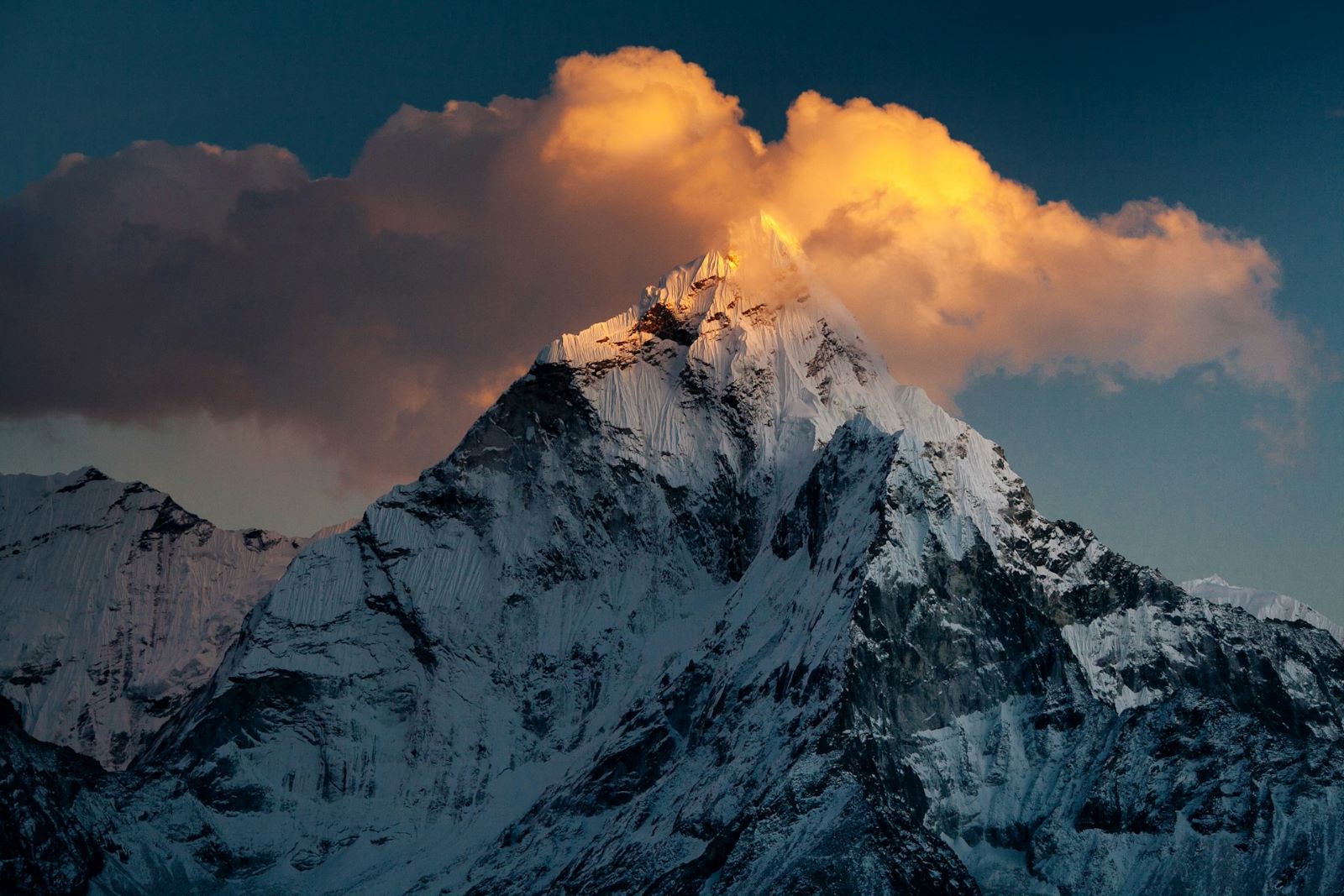
The journey to Everest Base Camp (EBC) is a captivating adventure to the base camp used by climbers aiming to summit Mount Everest. With two base camps, the trek in Nepal leads adventurers to the South Base Camp, sitting at an altitude of approximately 5,364 meters (17,598 feet). The expedition begins in Lukla, a small town that serves as the gateway for most treks to EBC, accessible via a short flight from Kathmandu. Lukla is home to the Tenzing-Hillary Airport, renowned for its short runway and precarious location, making it one of the most dangerous airports globally.
As trekkers proceed, they encounter Namche Bazaar, the largest town in the Khumbu region, sitting at an altitude of 3,440 meters (11,286 feet). This bustling hub serves as a crucial acclimatization stop and is famed for its Sherpa culture, vibrant markets, and stunning vistas of the Himalayas. Further along the trail lies the Tengboche Monastery, perched at 3,860 meters (12,664 feet), a spiritual sanctuary offering panoramic views of Everest, Ama Dablam, and other peaks, and serving as a cultural cornerstone for the Sherpas in the region.
One of the trek's most anticipated highlights is Kala Patthar, known for providing one of the most spectacular views of Mount Everest from an altitude of 5,643 meters (18,514 feet). This location is especially popular for witnessing the sunrise and sunset over Everest and its neighboring peaks. Acclimatization is a critical aspect of this trek, essential for preventing acute mountain sickness (AMS). Trekkers are advised to adhere to the "climb high, sleep low" principle and spend extra days at certain elevations to adjust to the lower oxygen levels.
The trek also offers an immersive experience into Sherpa culture, allowing travelers to engage with the local communities, visit monasteries, and partake in local festivals. Along the route, the Sagarmatha National Park, a UNESCO World Heritage Site, showcases the region's rich biodiversity, including rare species like the snow leopard and the red panda, within its rugged terrain and towering peaks.
High altitude poses significant challenges, with trekkers needing to adjust to lower oxygen levels. Awareness of AMS symptoms and taking preventive measures, such as proper acclimatization and hydration, are crucial. The journey is dotted with teahouses, small lodges providing accommodation and meals, offering trekkers a cozy place to rest and a chance to interact with fellow adventurers and locals. These elements together create a trekking experience that is not just a physical journey but a deep dive into the natural beauty, cultural richness, and personal discovery that the Everest Base Camp Trek embodies.
Annapurna Circuit Trek Routes
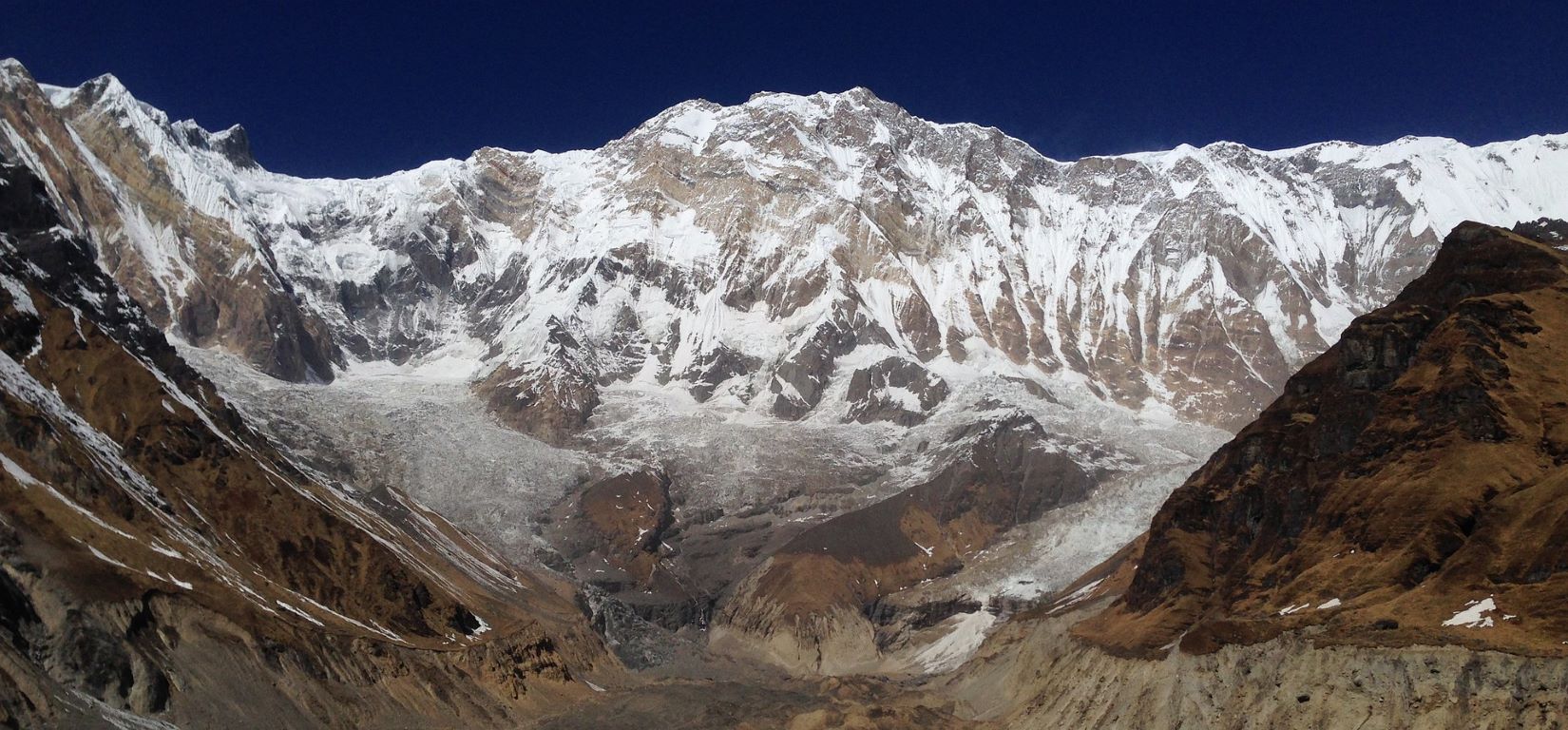
The Annapurna Circuit Trek, renowned as one of the most diverse and stunning trekking routes in the world, encircles the Annapurna massif in Nepal, offering an extraordinary journey through varied landscapes and cultures. This trek, often completed in about 2-3 weeks, traverses lush subtropical forests, arid high mountain landscapes, and deep valleys, providing trekkers with breathtaking views of some of the highest peaks, including Annapurna I, Dhaulagiri, and Machhapuchhre. The trek starts from Besisahar or Bhulbhule in the Marsyangdi River valley and concludes in the Kali Gandaki Gorge, the world's deepest gorge.
A significant highlight of the Annapurna Circuit is the crossing of the Thorong La Pass, the highest point on the trek, at an altitude of 5,416 meters (17,769 feet). This challenging ascent offers an unforgettable sense of achievement alongside panoramic views of the surrounding Himalayas. As trekkers wind their way through the circuit, they encounter a mosaic of ethnic communities, including Gurung, Manangi, and Thakali, each with distinct cultures, languages, and traditions. This cultural immersion is enriched by the passage through Tibetan-style villages, ancient monasteries, and stupas, where trekkers can observe daily lives untouched by modernity, offering a glimpse into the enduring legacy of Himalayan civilizations.
The trek's path also takes adventurers through the Annapurna Conservation Area, Nepal's largest protected area, which is home to diverse flora and fauna. This conservation effort aims to preserve the natural and cultural resources of the Annapurna region. Trekkers can witness the ecological diversity, from paddy fields and subtropical forests in the lower regions to high-altitude landscapes adorned with alpine meadows, glaciers, and lakes. The varying altitudes present a unique opportunity to observe a wide range of plant and animal life, including endangered species such as the snow leopard and the Himalayan Tahr.
Another aspect that makes the Annapurna Circuit Trek appealing is the opportunity to experience the region's hot springs, such as those at Tatopani, which provide a soothing respite for tired muscles. The trek is not only a physical challenge but also a journey that offers spiritual solace; the natural hot springs are believed to have healing properties, and the serene landscapes provide a meditative backdrop.
The trek is accessible during the spring (March to May) and autumn (September to November) seasons, which offer the best weather conditions and clear views. However, the Annapurna Circuit has seen changes in recent years, with road construction altering some parts of the route. Despite this, alternative trails have been developed to ensure trekkers can still experience the remote and untouched areas of the Annapurna region.
Langtang Valley Trek Route

The Langtang Trek, nestled in the beautiful Langtang Valley north of Kathmandu, presents an exquisite trekking experience that combines natural beauty, cultural richness, and a relatively easier and shorter route, making it an ideal choice for those with limited time or seeking a less strenuous journey into the Himalayas. Unlike the more famous Everest and Annapurna treks, the Langtang Trek offers a quieter, yet equally captivating experience, with trails that meander through lush forests, traditional villages, and alongside glacial rivers, leading trekkers into the heart of the Langtang National Park.
The trek typically begins in Syabrubesi, a small town a few hours’ drive from Kathmandu, and progresses up the valley, offering trekkers stunning views of towering peaks such as Langtang Lirung, Ganesh Himal, and a range of other snow-capped mountains. One of the remarkable aspects of the Langtang Trek is its passage through diverse ecosystems. Starting from subtropical zones, the trail ascends to alpine forests and eventually to the stark, high-altitude landscapes that define the Himalayan region. This variety allows trekkers to experience a broad spectrum of flora and fauna, including the rare red panda and the Himalayan tahr.
The trek is not only a journey through nature but also a cultural expedition. The valley is home to the Tamang people, an ethnic group with roots in Tibet, offering trekkers a unique opportunity to witness the daily lives, customs, and traditions of these highland dwellers. Their warm hospitality is evident in the cozy teahouses and lodges that line the trekking route, providing comfortable resting points and delicious local cuisine. The Kyanjin Gompa, a Buddhist monastery located at the upper end of the valley, serves as both a spiritual center for the local community and a highlight for trekkers, offering insights into the region’s religious practices.
A significant draw to the Langtang Trek is the opportunity to explore the Langtang Glacier and the beautiful Kyanjin Ri or Tserko Ri, which offer panoramic views of the surrounding peaks. These side treks provide a sense of adventure and exploration, allowing trekkers to immerse themselves further into the high-altitude landscapes. Additionally, the region’s recovery and resilience after the devastating 2015 earthquake add a layer of significance to the journey, as trekkers witness the rebuilding efforts and the unwavering spirit of the local communities.
The Langtang Trek is best undertaken in the spring (March to May) and autumn (September to November) seasons, when the weather is most favorable, and the views are clearest. These periods also coincide with the blooming of wildflowers, including the rhododendrons that Nepal is famous for, adding splashes of color to the trek’s already stunning vistas.
Manaslu Trekking Route
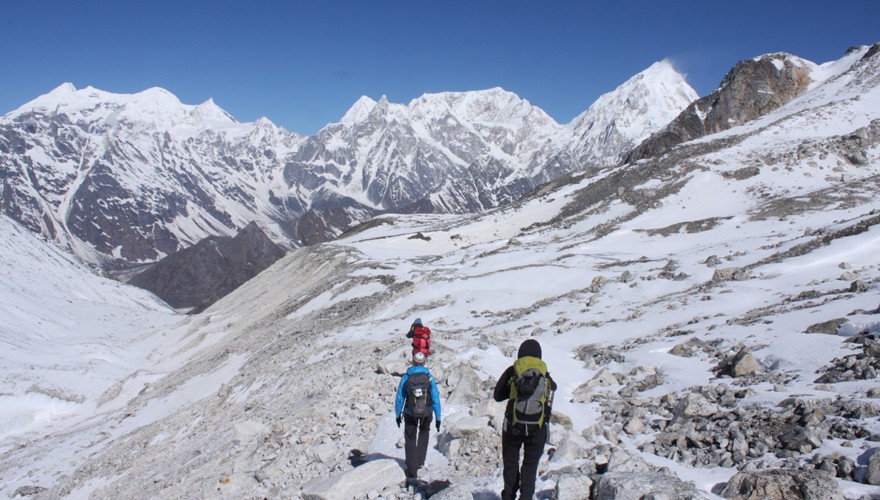
The Manaslu Trek, circling the majestic Mount Manaslu, the eighth highest mountain in the world, offers an extraordinary trekking experience that is rapidly gaining popularity among adventurers seeking a less crowded alternative to Nepal's classic treks. Situated in the Gorkha district, the trek navigates through the Manaslu Conservation Area, providing a stunning display of biodiversity and showcasing the beauty of a relatively untouched region of the Himalayas. The trek starts from Arughat or Soti Khola, accessible after a drive from Kathmandu, and gradually winds its way up to the Larkya La Pass, one of the trek's most challenging and rewarding sections, situated at an elevation of 5,106 meters (16,752 feet).
What sets the Manaslu Trek apart is its rich blend of cultural and natural diversity. The route passes through a variety of landscapes, from lush subtropical forests in the lower reaches to stark, high-altitude zones that offer dramatic vistas of Manaslu and its surrounding peaks. Trekkers traverse charming villages inhabited by different ethnic groups, including the Nubri and Tsum, whose Tibetan-influenced cultures offer a glimpse into traditional lifestyles and practices that have been preserved for centuries. The trek not only affords a chance to explore the rich cultural tapestry of the region but also provides an opportunity to witness the harmonious coexistence of people and nature.
The Manaslu Trek is considered a challenging adventure due to its remote location and the physical demands of crossing the Larkya La Pass. However, the effort is well rewarded with spectacular views, seclusion, and the sense of adventure that comes from trekking in a less-traveled part of the Himalayas. Along the way, trekkers can enjoy the hospitality of the local people in teahouses and lodges that have sprung up to cater to the needs of trekkers, offering a comfortable and authentic experience of rural Nepalese life.
Best undertaken in the spring (March to May) and autumn (September to November) seasons, the Manaslu Trek offers clear skies and favorable weather conditions, making it easier to navigate the trails and enjoy the breathtaking panoramas that the trek is famous for. These periods also showcase the region's natural beauty, with wildflowers in bloom in spring and the landscapes turning into a vivid array of colors in autumn.
Best Seasons for Trekking in Nepal
Nepal's trekking seasons are primarily dictated by its monsoon and dry periods, making pre-monsoon spring (March to May) and post-monsoon autumn (September to November) the best times to embark on trekking adventures. Spring offers a vibrant spectacle as the trails come alive with blooming rhododendrons and other wildflowers, under the increasingly warm sun, creating perfect conditions for clear mountain views and comfortable trekking weather. This season also sees a gradual increase in temperature, making high-altitude treks more accessible. Autumn, following the monsoon season, is characterized by clear skies, stable weather, and excellent visibility, making it the most popular trekking season. The air is fresh and crisp, and the visibility of the Himalayas is at its peak, providing spectacular panoramic views. During this time, the temperature is comfortably cool, making it ideal for long treks. Both seasons offer unique experiences in terms of climate, visibility, and natural beauty, attracting trekkers from around the world to Nepal's diverse and scenic trails.
Spring brings blooming rhododendrons and clearer trails, making the mountainsides a riot of colors.
Autumn is known for its excellent visibility and cooler temperatures, ideal for trekking.
Experiencing the Culture in Nepal Trekking
Trekking in Nepal offers more than just a physical challenge or the breathtaking vistas of the Himalayas; it is an immersive cultural experience that connects trekkers with the heart and soul of Nepal’s diverse ethnic communities. Each trekking route, whether it be the Everest Base Camp, Annapurna Circuit, Langtang Valley, or the Manaslu Trek, serves as a conduit through which trekkers can engage with centuries-old traditions, languages, and lifestyles that have been preserved and passed down through generations. The trails weave through remote villages and ancient trade routes where the ways of life have remained largely unchanged, offering a rare glimpse into the simplicity and richness of Himalayan cultures.
The cultural experience is most vivid in the interactions with the local people, who are known for their warmth and hospitality. Staying in teahouses and lodges, trekkers are welcomed into the homes of local families, providing an authentic experience of daily life in the mountains. Meals become a time of cultural exchange, with the opportunity to taste traditional Nepalese cuisine such as dal bhat (lentils and rice), momos (dumplings), and other regional specialties prepared with local ingredients. Celebrations and festivals offer another layer of cultural immersion, where trekkers can witness traditional dances, music, and religious rituals that are often celebrated with the entire community. Notable among these is the Mani Rimdu festival in the Everest region and the Tiji festival in Mustang, which are vibrant expressions of Buddhist culture.
Moreover, the trekking journey allows for exploration of Nepal’s spiritual heritage, seen in the monasteries, stupas, and prayer flags that dot the landscape, imbuing the mountains with a sense of tranquility and reverence. Visiting these sacred sites, trekkers can observe Buddhist monks in prayer, listen to the resonant chants that fill the air, and learn about the spiritual practices that are integral to daily life in these communities. The architectural beauty of these religious sites, often set against the dramatic backdrop of the Himalayas, adds a profound dimension to the trekking experience, inviting trekkers to reflect on the interconnectedness of nature and spirituality.
In essence, trekking in Nepal is a journey that transcends the physical realms, offering a deep dive into the cultural and spiritual life of the Himalayan people. It is an opportunity to witness the enduring strength of traditions that have adapted to the challenging environment of the high mountains, and to celebrate the shared humanity that binds us all, regardless of geography. Through this immersive experience, trekkers return home not just with memories of the landscapes they have traversed, but with a deeper understanding and appreciation of the rich tapestry of cultures that thrive in the shadow of the Himalayas.
Practical Advice for Trekkers
Acclimatization is Key: To prevent altitude sickness, it’s crucial to acclimatize properly, especially when trekking above 2,500 meters. Plan your itinerary to include days for acclimatization, allowing your body to adjust to the altitude gradually. Following the mantra "climb high, sleep low" can be particularly effective.
Hire Local Guides and Porters: Local guides not only enhance the trekking experience with their knowledge of the terrain, culture, and language but also contribute to the local economy. Porters can alleviate the physical strain by carrying your luggage, allowing you to enjoy the trek more fully. Ensure they are equipped and insured.
Stay Hydrated and Eat Well: The physical exertion of trekking and the high altitude increase hydration needs. Drink plenty of water and consume a balanced diet rich in carbohydrates for energy. Avoid alcohol, especially at high altitudes, as it can increase the risk of dehydration and altitude sickness.
Pack Smart: Essentials include a good quality sleeping bag, layers of clothing to accommodate varying temperatures, sturdy trekking boots, a first-aid kit, sun protection, and personal hygiene items. Remember to pack light, as carrying unnecessary weight can quickly become burdensome.
Travel Insurance: Ensure your travel insurance covers high-altitude trekking and emergency evacuation. It’s an indispensable safeguard against unforeseen medical issues or accidents.
Respect Local Customs and Environment: Be mindful of local traditions and etiquette, especially when visiting monasteries and sacred sites. Dress modestly, ask for permission before taking photos of people, and carry out all trash to minimize environmental impact.
Prepare for the Unexpected: Weather in the mountains can be unpredictable. Be prepared for sudden changes in weather conditions and have contingency days in your itinerary for delays or rest.
Best incredible facts of Nepal Himalaya:
Nepal's Himalayas are not just a trekker's paradise but also a treasure trove of incredible facts that highlight the region's uniqueness and global significance. Here are some of the most fascinating:
Home to the Giants: Nepal houses 8 of the world's 14 highest peaks, including Mount Everest, the highest point on Earth at 8,848 meters (29,029 feet). This makes it a prime destination for mountaineers and trekkers alike.
Deep Gorges and High Passes: The Kali Gandaki Gorge in Nepal is considered one of the deepest in the world. Surrounded by Annapurna and Dhaulagiri, it offers breathtaking views and challenging treks. Additionally, the Thorong La Pass in the Annapurna Circuit, at 5,416 meters (17,769 feet), is one of the highest and most famous trekking passes globally.
Ancient Trails: The trails in Nepal are steeped in history, used for centuries for trade and pilgrimage. The region's trails, including the famous Silk Road, have facilitated cultural exchange and commerce between Tibet and the Indian subcontinent for millennia.
Diverse Ecosystems: The elevation in Nepal ranges from below 100 meters to the highest point on Earth, creating incredibly diverse ecosystems within a relatively small area. Trekkers can walk through tropical jungles, alpine forests, and arctic conditions, all within the span of a few days' journey.
Cultural Melting Pot: Nepal is home to over 120 ethnic groups, each with its own language, religion, and customs. Trekking in the Himalayas offers a unique opportunity to experience this cultural diversity, especially the rich Tibetan Buddhist culture in the highlands and the ancient animistic beliefs in the lower regions.
Living Religions: The Himalayas are not just a natural wonder but also a spiritual haven. Sites like Muktinath on the Annapurna Circuit and Tengboche Monastery in the Everest region are important pilgrimage destinations for both Buddhists and Hindus.
Conservation Success Stories: The Annapurna Conservation Area Project (ACAP) and Sagarmatha National Park are models of successful conservation efforts in high-altitude environments. These initiatives protect biodiversity while promoting sustainable tourism practices.
Teahouse Trekking Culture: Nepal's unique teahouse trekking allows trekkers to enjoy the comforts of local hospitality, including traditional food and accommodations, making high-altitude treks accessible without the need for camping gear.
The Yeti Mystique: The Himalayas are famously home to the Yeti, or Abominable Snowman, a creature of folklore that has captured the imagination of locals and trekkers alike. While evidence of its existence is anecdotal, the mystery adds an element of intrigue to the trekking experience.
Birthplace of Buddha: Although not directly related to trekking, one of Nepal's proudest claims is as the birthplace of Lord Buddha in Lumbini, highlighting the country's rich spiritual heritage.

